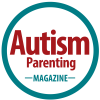-
About
- About Listly
- Community & Support
- Howto
- Chrome Extension
- Bookmarklet
- WordPress Plugin
- Listly Premium
- Privacy
- Terms
- DMCA Copyright
- © 2010-2025 Boomy Labs

Listly by Autism Parenting Magazine
Looking for the best autism toys for children? Let this complimentary guide give you tips on choosing and buying the perfect autism toys for children.
Download our Free Guide here:
https://www.autismparentingmagazine.com/best-autism-toys/

Looking for the best autism toys for children? Let this complimentary guide give you tips on choosing and buying the perfect autism toys for children.

Assistive technology (AT) is defined as any product, equipment, software program and/or system that enhances learning, working, and daily living for persons with disabilities.The goal of assistive technology is to increase, maintain, or improve the functional capabilities of people with disabilities (ATIA).

In my work as a clinical child psychologist, I frequently encounter parents bewildered by their kids’ fascination with video games, social media, and other screen-based technologies. While problems with these technologies seem to be worse with kids diagnosed with ADHD or autism spectrum disorder (ASD), even many of the siblings of my patients would choose to sit in front of a screen all day long if given the opportunity.

Assisting your child with these and other self-help tasks daily can often bring stress to your life. If you can teach your child to do these self-help tasks on his/her own, you will reduce stress for yourself and increase your child’s sense of independence. Both of these are important developments for the health of your family unit.

Some children with autism and their families are known to benefit from the presence of an assistance dog. Little research has been done on ethical issues that can arise around the dogs’ welfare or methods to limit the stress on both the dog and the family. The goal of this piece is to identify and examine the ethical considerations of dogs used in service to children with autism.

Disappointment is all around us, unfortunately. It is not something that we can avoid. How it is manifested in our lives is unique to each person. We cannot always have what we want, when we want it. As a parent, we often do things to help our children avoid experiencing disappointment, but there will be times that we cannot shelter them from it.

Almost all parents, including those who are actively involved in their child’s special education plan, feel unprepared to navigate the transition from high school to adult life. This article highlights important findings about outcomes for adults with autism spectrum disorder (ASD) from several new studies. (Warning: You may not like what you read). The discussion continues with specific things you can do to improve your child’s chances of becoming a successful adult.

There are countless stories out there about youth with autism struggling during the process of transition and other times of change. Whether it’s moving out of Mom and Dad’s house, going to a new school, or finding work, just to name a few scenarios, all of them have one thing in common…they have the potential to make you a better person.

For a parent, it can seem overwhelming when a child is diagnosed with autism spectrum disorder (ASD). There are a myriad of conditions that affect children in so many different ways — some children have trouble with communication and concentration while others struggle with repetitive behavior and can be extremely sensitive to touch, certain sounds, or smells.

Many people use hand fidgets to relieve stress and anxiety, to help focus, or just for plain fun. Stress balls, putty, and anything squishy and squeezy are helpful because they’re soothing, calming, and enjoyable to fidget with. Sensory items have helped people of all ages, from adults sitting at a desk at work to children in classrooms.
